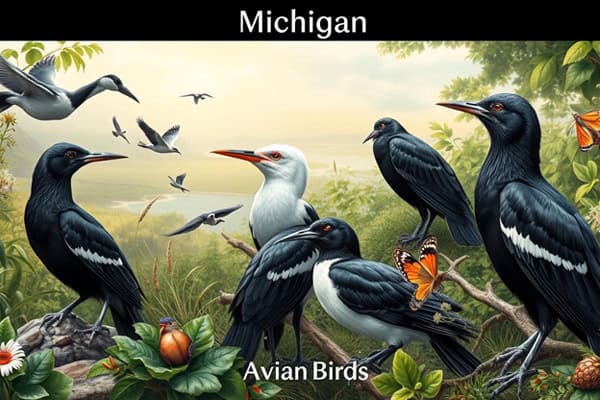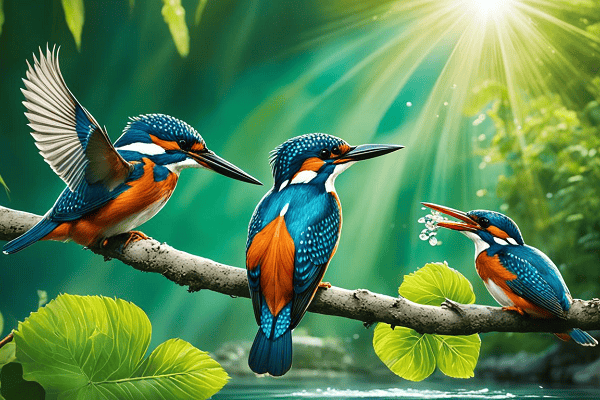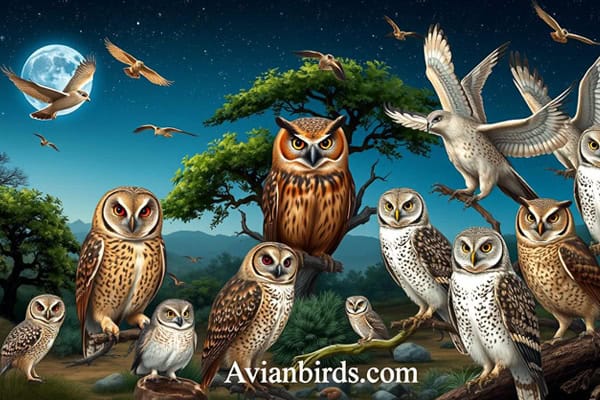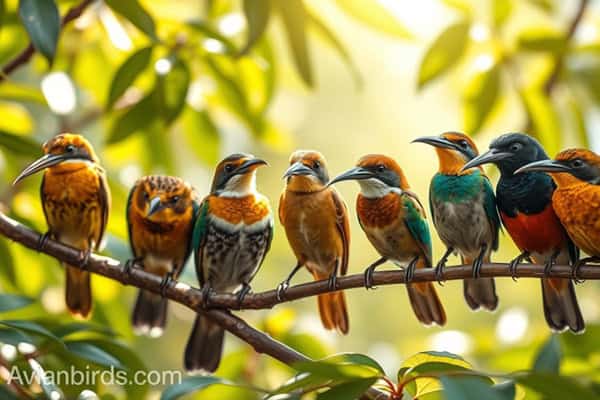Top 10 Black and White Birds in Michigan To Spot (With Pictures)
Did you know Michigan is home to over 450 bird species including black and white birds? They are key to Michigan’s bird diversity. This makes birdwatching in Michigan a thrilling adventure into the state’s wildlife.
This guide will show you the top 10 black and white birds in Michigan. You’ll learn about their looks, where they live, and how they act. Plus, you’ll see pictures that make birdwatching even more exciting. Whether you’re new to birding or want to get better, these birds will make you love nature more.
Common Black and White Birds Found in Michigan
- White-breasted Nuthatch
- Dark-eyed Junco
- Black-capped Chickadee
- Northern Mockingbird
- Downy Woodpecker
- Hairy Woodpecker
- Snow Bunting
- Common Loon
- Common Goldeneye
- Eastern Kingbird
Introduction to Black and White Birds in Michigan
In Michigan, many black and white birds catch the eye of birdwatchers and nature fans. This introduction to black and white birds shows their beautiful colors and interesting ways of living. From the common Black-capped Chickadee to the rare Snow Bunting, these birds play a big role in our ecosystems.
When you go to Michigan birdwatching, you’ll see different places where these birds live. Knowing about their unique looks and social ways makes you appreciate nature more. Here are some things that make these birds special:
- Eye-catching contrasting colors
- Diverse feeding habits
- Unique vocalizations that add to Michigan’s soundscape
Learning about these birds makes birdwatching more fun and helps you connect with nature. Whether it’s the cute White-breasted Nuthatch or the tough Dark-eyed Junco, black and white birds are a joy in Michigan’s wildlife.
| Bird Species | Coloration | Habitat |
|---|---|---|
| Black-capped Chickadee | Black and white with a hint of brown | Woodlands, parks, and gardens |
| Snow Bunting | Predominantly white with black wings | Open fields and tundra |
| Downy Woodpecker | Black and white with red on the head | Forests and backyards |
1. White-breasted Nuthatch
- Scientific Name: Sitta carolinensis
- Size: (13 to 14 cm)
- Wingspan: Approximately (22 to 26 cm)
- Weight: (20 to 28 grams)
- Diet: Insects, seeds, nuts, and occasionally berries
- Life Span: Typically 2 to 5 years, but can live up to 9 years in the wild
The White-breasted Nuthatch is a lovely bird found in Michigan’s yards and woods. It catches the eye with its special looks and ways. Learning about its traits, eating habits, and sounds can make birdwatching more fun.
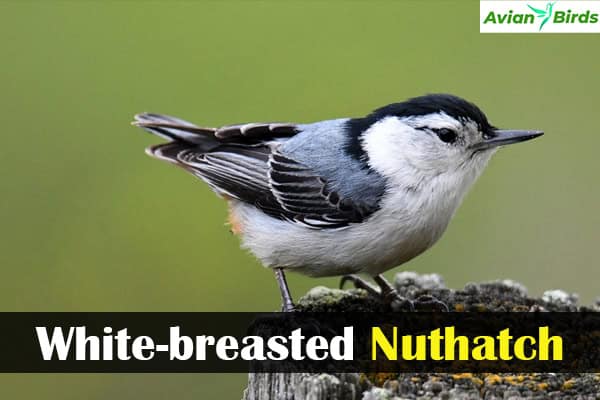
Identifying Characteristics
This bird stands out with its black cap on males and lighter crown on females. They have short tails and sturdy bodies with a sharp bill. These features help them search for food in trees and at feeders.
Habitat and Feeding Preferences
White-breasted Nuthatches live in forests but also like suburban areas. They love your backyard if you fill feeders with sunflower seeds, peanuts, and suet. They store food, so you can see them get it back in the cold months. Knowing how they eat can bring more of these birds to your yard.
Vocalization
Listen for their “yank” call to spot a White-breasted Nuthatch. This sound is common all year. It helps you know they’re around, even if you can’t see them.
| Characteristic | Description |
|---|---|
| Size | Approximately 6-8 inches in length |
| Color | Black cap, white face and underparts, blue-gray back |
| Habitat | Deciduous forests and suburban backyards |
| Feeding | Sunflower seeds, peanuts, suet |
| Vocalization | Distinctive “yank” call |
2. Dark-eyed Junco
- Scientific Name: Junco hyemalis
- Size: (14–16 cm)
- Wingspan: (21–25 cm)
- Weight: (20–31 grams)
- Diet: Seeds and insects
- Life Span: 3–6 years
The Dark-eyed Junco is a common bird in Michigan. You can see it in yards and fields. Knowing how to spot this bird makes birdwatching more fun. It helps you understand its habits and where it lives.
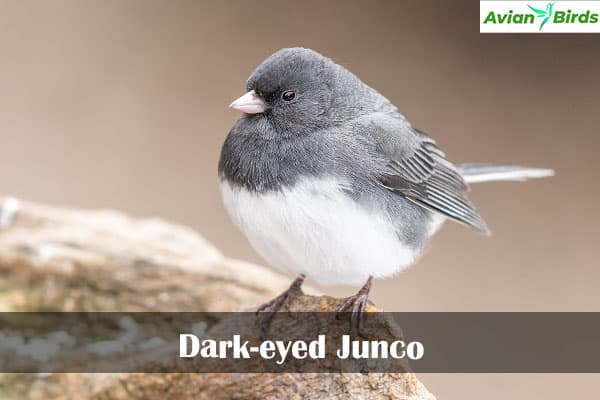
Identifying Features
Look for the Dark-eyed Junco because of its gray body and white belly. It has a white feather at the tail’s end that shows when it flies. Adult males are darker than females, making them stand out.
Seasonal Habits
Learning about the Dark-eyed Junco’s seasonal habits makes birdwatching better. They come to Michigan from Canada and the northern U.S. for winter. Also, They like to look for seeds on the ground in fields and yards.
They often fly together in big groups. In spring, they go back to higher places to make nests. This shows how they can live in different places.
| Season | Behavior | Habitat | Diet |
|---|---|---|---|
| Winter | Foraging in flocks | Fields, backyards | Seeds, some insects |
| Spring | Nesting and breeding | Higher elevations | Seeds, insects, and berries |
3. Black-capped Chickadee
- Scientific Name: Poecile atricapillus
- Size: 4.7–5.9 inches (12–15 cm)
- Wingspan: 7.5–8.7 inches (19–22 cm)
- Weight: 0.3–0.5 ounces (8–14 grams)
- Diet: Insects, seeds, and berries
- Life Span: 2–4 years
The Black-capped Chickadee is a small, delightful bird. It is known for its unique looks and charming ways. These birds quickly win over bird lovers and those who just like to watch them.

They are friendly and curious, often making special moments for those who see them.
Physical Characteristics
Black-capped Chickadees are about 4.7 to 5.9 inches long. They have a black cap and bib that stand out against their white cheeks. Their gray wings and back add to their striking look.
They also have a round body and a short tail. These features make them easy to spot among other birds.
Behavior and Interaction with People
Black-capped Chickadees are bold and playful around humans. They are often the first to visit feeders, even when people are around. Their curiosity lets them thrive in cities, offering great chances to watch them.
People love seeing these small birds at feeders. They show off their boldness during feeding times. This close interaction helps us learn more about their behavior and shows how friendly they are.
4. Northern Mockingbird
- Scientific Name: Mimus polyglottos
- Size: 9.1–11.0 inches (23–28 cm)
- Wingspan: 12.6–15.4 inches (32–39 cm)
- Weight: 1.3–2.0 ounces (37–57 grams)
- Diet: Insects, fruits, and berries
- Life Span: 4–7 years
The Northern Mockingbird is a star in Michigan’s bird world. It’s known for its amazing singing skills. This bird has a long tail and looks grayish-brown. It can make many different sounds, making it a great singer.
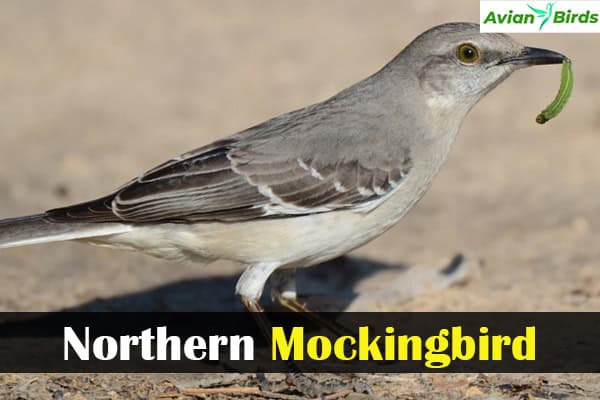
Bird lovers enjoy hearing the Northern Mockingbird’s calls. They can listen to these sounds all day.
Identifying Characteristics
The Northern Mockingbird has some key features:
- Long tail that aids in agile flight
- Sharp, bright eyes that lend a curious appearance
- Three or more white wing bars visible in flight
These traits help you spot this interesting bird. You might see it in backyards or open fields.
Behavioral Traits
Northern Mockingbirds are bold and adaptable. They can be fierce when defending their territory. But, they’re more calm when eating.
They don’t often go to bird feeders. But, they do eat insects and berries. This makes them a common sight in many places. They add energy to Michigan’s outdoors.
5. Downy Woodpecker
- Scientific Name: Picoides pubescens
- Size: 5.5–6.7 inches (14–17 cm)
- Wingspan: 9.8–11.8 inches (25–30 cm)
- Weight: 0.7–1.0 ounces (20–28 grams)
- Diet: Insects, seeds, and berries
- Life Span: 1–3 years, up to 11 years in the wild
The Downy Woodpecker is a joy to see in North American yards. It’s small, with black and white feathers and a short bill. These birds live in many places, like parks and suburbs. Watching them search for food can make birdwatching fun.

Distinctive Features and Behavior
Look for the Downy Woodpecker’s black back and white belly. Males have a red spot on their heads. They drum on trees to find insects under the bark. They move up and down trees to find bugs, showing off their skill.
Attracting Downy Woodpeckers to Your Yard
It’s fun to attract Downy Woodpeckers to your yard. Here’s how to do it:
- Suet: This food is perfect for woodpeckers and goes in special feeders.
- Sunflower seeds: These seeds draw in many birds, including Downy Woodpeckers.
- Tree roosts: Keeping dead trees can be a safe spot for them to forage.
6. Hairy Woodpecker
- Scientific Name: Dryobates villosus
- Size: 7–10 in (18–25 cm)
- Diet: Insects, seeds, fruits, nuts
- Lifespan: 4–15 years
- Wingspan: 13–16 in (33–41 cm)
- Weight: 1.5–3.4 oz (43–96 g)
The Hairy Woodpecker looks a bit like the Downy Woodpecker. But it’s bigger and has a longer bill. These differences make it fun to spot during birdwatching.
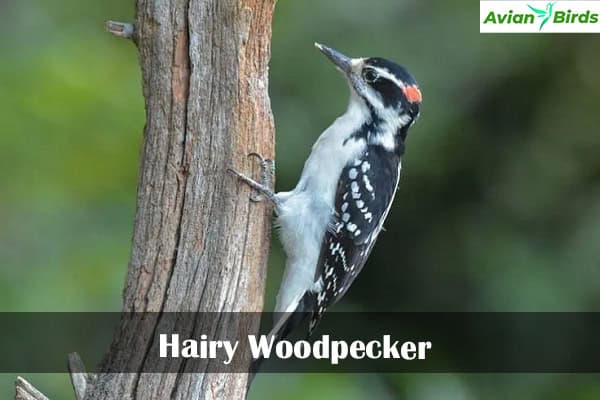
This bird lives in many places in Michigan, like deep forests and city parks. Its black and white look helps it hide in the trees. This lets it sneak up on insects and larvae in the bark.
Knowing how the Hairy Woodpecker acts can help you see it better. They like to be alone and work hard on trees. Their drumming sound in the woods makes them easy to find.
| Feature | Hairy Woodpecker | Downy Woodpecker |
|---|---|---|
| Size | Larger | Smaller |
| Bill Length | Longer | Shorter |
| Habitat | Forests and Parks | Gardens and Woodlands |
| Coloration | Black and White | Black and White |
| Behavior | More Solitary | More Social |
7. Snow Bunting
- Scientific Name: Plectrophenax nivalis
- Size: 5–7 in (13–18 cm)
- Diet: Seeds, insects
- Lifespan: 3–8 years
- Wingspan: 11–13 in (28–33 cm)
- Weight: 1–1.7 oz (28–48 g)
The Snow Bunting is a bird with stunning black and white feathers. It’s a beautiful sight in Michigan during winter. These birds come from the Arctic to live in open fields and by the coast. Knowing how to spot them can make birdwatching more fun.

Identification and Habitat
Look for the Snow Bunting’s unique feathers. In winter, males have white feathers with black tips. Females are less colorful. They like living in:
- Open fields
- Coastal shorelines
- Snow-covered plains
Breeding and Nesting Behavior
In the spring, Snow Buntings build nests in special places. They use rock crevices or grassy spots, often far away. Their nests are cozy, made of feathers and plants. This helps them raise their babies in tough weather.
Wintering Habits in Michigan
In winter, Snow Buntings are really interesting to watch. They live together in groups and eat seeds and grains from the ground. Seeing how they adapt to Michigan’s cold is fun for bird lovers.
| Characteristic | Description |
|---|---|
| Plumage | Black and white, males are more striking than females |
| Habitat | Open fields, coastal areas |
| Nesting | Rock crevices, lined with feathers and plant materials |
| Diet | Seeds and grains, foraged from the ground |
8. Common Loon
- Scientific Name: Gavia immer
- Size: 24–40 in (61–102 cm)
- Diet: Fish, crustaceans, insects
- Lifespan: 9–30 years
- Wingspan: 46–52 in (117–132 cm)
- Weight: 6.6–13.9 lbs (3–6.3 kg)
The Common Loon is a beautiful bird that catches the eye of many in Michigan. It’s known for its black-and-white look. This bird has traits that make it stand out on lakes and other water places.

Physical Characteristics
The Common Loon has a long body and a sharp bill perfect for catching fish. In the spring, it shows off a black-and-white pattern on its back. This helps it hide from predators. In the winter, it turns gray and white to blend in with the snow.
Vocalizations and Nesting Sites
The Common Loon’s sounds are hauntingly beautiful, adding magic to Michigan’s lakes. Their calls are eerie and important during mating season. They nest in shallow water near the shore, hidden in reeds and plants. This spot is safe and close to where they find food.
9. Common Goldeneye
- Scientific Name: Bucephala clangula
- Size: 16–20 in (40–51 cm)
- Diet: Aquatic invertebrates, fish, crustaceans, plants
- Lifespan: 10–15 years
- Wingspan: 30–32 in (76–81 cm)
- Weight: 1.3–3.5 lbs (0.6–1.6 kg)
The Common Goldeneye is a sight to behold. It catches the eye with its bright dark green head and bold white patches. These ducks are easy to spot in their natural setting. Learning about their looks and how they eat makes them even more interesting.
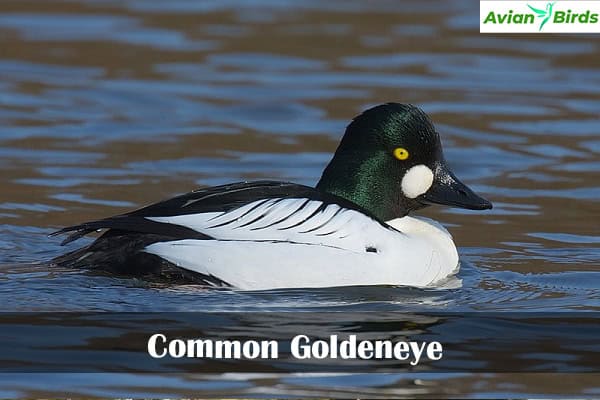
Identifying Features
Look for these key features when you see a Common Goldeneye:
- Coloration: Males have a shiny green head, a white circle near the eye, and a white breast.
- Size: They are about 16 to 20 inches long.
- Bill: Their bill is short and thick, perfect for underwater eating.
Habitat and Feeding Patterns
Common Goldeneyes live in freshwater lakes and rivers. They stop to eat during migration, showing off their diving skills. They mainly eat:
- Fish: They dive to catch smaller fish.
- Aquatic Invertebrates: They find crustaceans and insects underwater.
10. Eastern Kingbird
- Scientific Name: Tyrannus tyrannus
- Size: 7.5–9 in (19–23 cm)
- Diet: Insects, berries
- Lifespan: 5–10 years
- Wingspan: 13–15 in (33–38 cm)
- Weight: 1.2–1.9 oz (33–55 g)
The Eastern Kingbird is known for its amazing flying skills and bold nature. It’s a bird that catches the eye because of its hunting techniques and how it defends its area. It shows off its Eastern Kingbird behavior in its home.
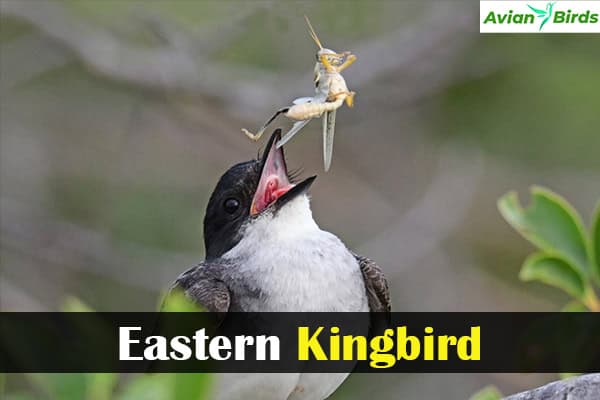
Behavior and Habitat Preference
These birds live in open fields and near water, where they find lots of insects to eat. They pick places with lots of food to support their active life. They catch insects in mid-air with great skill.
Watching them hunt is exciting. It’s something that birders of all levels enjoy. They also get protective during the breeding season. They chase away bigger birds that get too close to their nests. This shows how they care for their young.
Their looks and actions make them interesting to watch. Anyone who likes birdwatching should see them.
Check Our Previous Articles:
| Brown Birds In Michigan |
| Yellow Birds in Colorado |
| Black Birds in Michigan |
| Owls in Indiana |
| Learn About the White-Naped Crane |
Conclusion
Michigan is home to many black and white birds that fascinate bird lovers. From the playful Black-capped Chickadee to the elegant Common Loon, each bird is important to the environment. Learning about their lives helps you enjoy birdwatching in Michigan more.
When you go birdwatching or watch from home, try to attract birds with the right feeders and food. This brings these beautiful birds closer and connects you with nature. Watching these striking birds reminds us of nature’s beauty.

